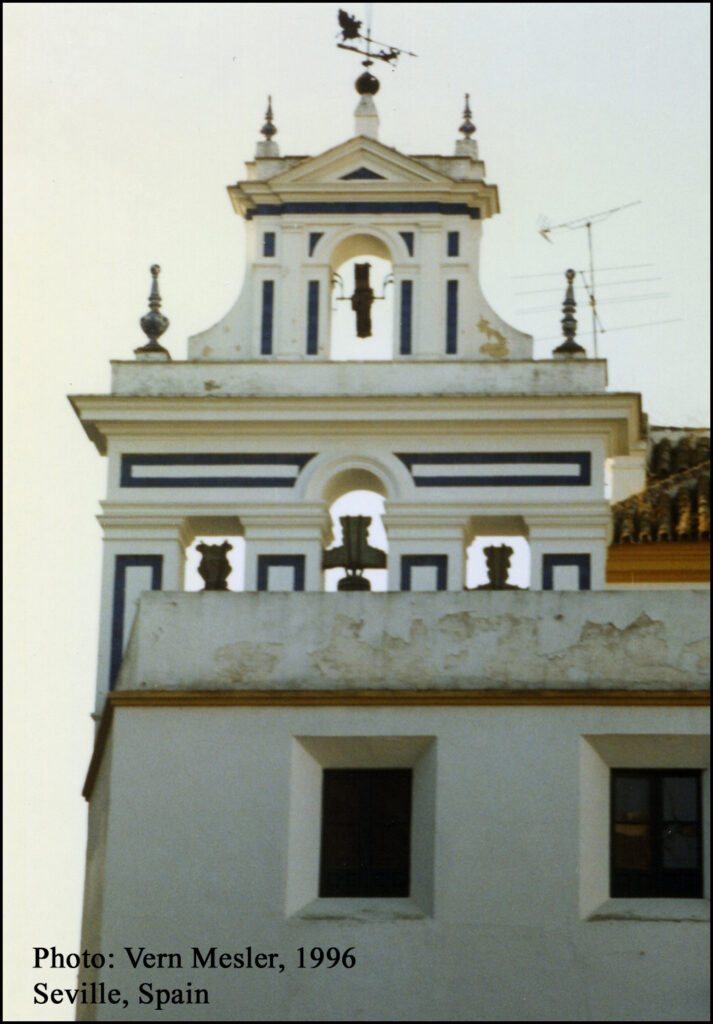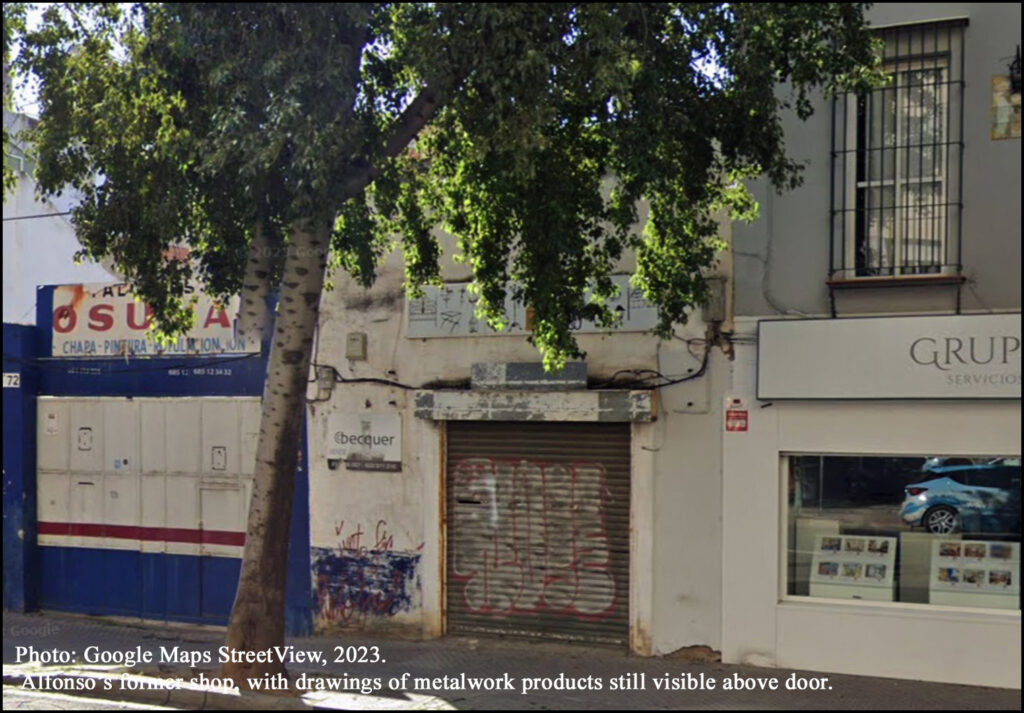We met in the hotel lobby; it has been almost thirty years since that July morning, and the minute details of our conversation are obscured by age. At that time, I was working to establish an ornamental iron and sculptured steel business in Michigan and teaching as an adjunct welding instructor at Lansing Community College. We had arranged for Marcelle Cole to work as my interpreter the evening before, during Nan’s registration for the ICME 8, an international mathematics conference held in Seville, Spain. We had asked the young man at the registration table if anyone at the conference could be employed as an interpreter; no, but he did have a friend who might be interested. During their phone conversation Marcelle agreed but required a larger fee than Nan and I had proposed. We accepted.
Ornamental iron, sculptured steel, and education was enough information from me for Marcelle to begin plotting our travels. First stop was an art academy Marcelle had a connection with, but there didn’t seem to be much metal art there. Searching through a phone directory and copying several pages about ornamental iron shops, we settled on one. Entering the store, we found it filled with hand crafted iron* and at the counter Marcelle explained our mission to the owner. I enjoyed listening to Marcelle communicating with the shop owner and later a blacksmith in Spanish; she seemed to be enjoying our adventures in iron. I didn’t understand much of what was said, but it appeared the shop owner understood I wanted to meet someone who made ornamental iron. A pleasant, animated phone call was made. “No, no, Alfonso,” it sounded as if Alfonso thought he was getting an order or a complaint, but soon understood he was to have visitors at his shop. Marcelle jotted down Alfonso Romero Lopez’s shop address and ordered a cab. Our cab ride took us through an older area of Seville; we passed a Roman aqueduct probably built when Lansing, Michigan, was only populated with beavers, bears, and deer. Marcelle and the cab rider took little notice of this ancient artifact.
Alfonso greeted us, and it soon became apparent to me that Marcelle and Alfonso had quickly developed a rapport as Alfonso described his work in ornamental iron. Marcelle was good at keeping me involved in the conversation, translating my questions about the tools and techniques Alfonso used in his work. His shop was filled with ornamental iron; at the time, he and his partner were fabricating ornamental iron gates. Alfonso did a demonstration with his hammer; a blacksmith’s anvil and forge stood nearby.
We arrived back at the conference site to meet Nan for lunch. As we settled in, I handed Marcelle the fee we had agreed to, but she declined to accept it. Marcelle had enjoyed her morning adventures in iron and learned so much from Alfonso Romero Lopez on the art of ornamental iron fabrication that no payment was necessary. It took some time to persuade Marcelle to accept cab fare home. We exchanged a few letters with Marcelle over time, and on another visit to Seville we nearly made a connection, but it didn’t work out. I found Alfonso’s shop on Google Maps recently; it appears to have been shuttered for some time, and a bit out of place among the shops nearby. You can still see a reminder of Alfonso’s work in the faded paint above the door: a row of ornamental iron products carefully drawn on the wall.
What is left for me is a memory of a 1996 morning in Seville, and recording this in words gives voice to two who loved art and metal craft, Marcelle Cole and Alfonso Romero Lopez.
*While ornamental iron and wrought iron are terms often used to describe some metal products today, they are usually made of steel or wrought steel.










